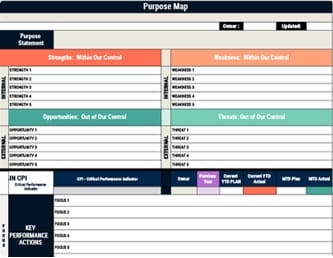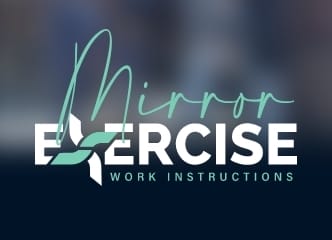McKinsey reports 70% of transformations fail largely due to misalignment, which means you likely waste effort, confuse teams, and frustrate customers without realizing it. You’ll learn how to connect strategy to daily work using OKRs, the McKinsey 7-S Model, and clear operating rhythms, then measure progress with practical metrics and feedback loops. You’ll also see implementation steps, tools, and real cases you can adapt, so you can spot hidden gaps and fix them before they compound.
Key Takeaways
- Align strategy to daily work through vertical, horizontal, and customer-centric alignment to reduce duplication and accelerate delivery.
- Use frameworks like OKRs, McKinsey 7-S, OGSM, and 4DX to set goals, diagnose gaps, and drive disciplined execution.
- Measure alignment with employee surveys, Organizational Alignment Survey, operational KPIs, and qualitative interviews for a holistic view.
- Implement via phased rollouts: pilot, refine based on feedback, scale when metrics show traction, and monitor continuously.
- Establish collaboration norms, transparent dashboards, regular check-ins, and accountability mechanisms to sustain alignment and adapt to change.
Understanding the Importance of Organizational Alignment
Alignment is the backbone that keeps your organization moving in one direction, guaranteeing every team and individual channels their effort toward shared goals that drive measurable results.
You need organizational alignment to link strategic goals with daily work, so departments collaborate around common goals rather than competing priorities. When you stress the importance of aligning organizational activities, you boost employee engagement, reduce turnover, and improve coordination that accelerates delivery.
Use continuous communication to translate vision into plans, and guarantee your organizational structure supports decision rights and accountability. Regular performance assessments keep progress visible and correct drift early, while agile project management maintains adaptability as markets shift.
Aligned companies execute faster, waste less effort, protect profitability, and strengthen customer satisfaction across the lifecycle.
Types of Organizational Alignment
With the value of working in one direction established, you now need to choose the alignment types that structure how that unity shows up day to day.
Start by clarifying the types of alignment you’ll use to connect strategy, operations, and outcomes to organizational goals.
Clarify alignment types to link strategy, operations, and outcomes directly to organizational goals.
Use vertical and horizontal alignment together: vertical alignment cascades priorities and information from leadership to teams, so people see how their work advances shared goals, while horizontal alignment drives collaboration among departments to reduce duplication and create synergy.
Strategic alignment binds every function to a common strategic vision, ensuring plans and budgets reinforce the same long-term objectives.
North Star alignment focuses teams on one key metric, sharpening prioritization and trade-offs.
Customer alignment orients decisions toward real needs, improving relevance and loyalty.
Combine these through simple organizational alignment frameworks.
Core Models and Frameworks
Occasionally, the fastest way to turn intent into impact is to anchor your organization in proven models that translate strategy into day-to-day execution with clear lines of sight.
To drive organizational alignment, start by selecting alignment frameworks that fit your context and cadence. Use OKRs to set ambitious strategic objectives, cascade them to teams, and review progress frequently, ensuring priorities stay visible and adaptable.
Apply the McKinsey 7-S Model to diagnose gaps across structure, systems, skills, staff, style, strategy, and shared values, then target alignment strategies to close them.
Employ OGSM to place long-term choices on one page, while acknowledging it’s less agile for short cycles.
Leverage 4DX to execute WIGs with disciplined commitments.
Finally, deploy the Organizational Alignment Survey to quickly surface alignment hotspots.
Measuring Alignment Effectiveness
Many organizations measure alignment effectiveness by pairing quantitative signals with qualitative insights, so you should start by gathering direct feedback and tying it to outcomes.
Use employee surveys with a 1–5 scale to gauge clarity of goals and communication quality, then compare responses with performance metrics linked to strategic goals.
Deploy the Organizational Alignment Survey to examine twelve factors, identify misalignment indicators like unclear roles, hidden dependencies, and weak task communication, and prioritize fixes.
Establish regular assessments and feedback loops, ensuring you revisit trends quarterly and track whether actions reduce gaps.
Leverage frameworks like OKRs to connect objectives with measurable results, and pair them with diagnostic models to audit structure, process, and culture.
Finally, triangulate survey data, operational results, and qualitative interviews to confirm alignment movement.
Step-by-Step Implementation Guide
Start by translating your long-term vision into a small set of clear, strategic objectives that reflect core values and distinctive competencies. Then decompose each objective into measurable key results that specify what success looks like and when it should be achieved.
Map these strategic objectives to an organizational alignment framework, such as OKRs or 7-S, to connect strategy, structure, and culture to common goals. Define roles and responsibilities so every team understands ownership, interdependencies, and handoffs.
Link strategic objectives to OKRs or 7-S, clarify roles, and align ownership, interdependencies, and handoffs.
Establish an implementation process with quarterly planning, monthly check-ins, and weekly priorities to keep execution on track. Run regular performance assessments using leading and lagging indicators, then adjust through tight feedback loops.
Maintain continuous communication across channels, share progress and risks transparently, and reinforce decisions that align with core values and competencies.
Case Studies and Best Practices
Three cross-industry patterns illustrate how alignment translates into measurable results, and you can use them as templates to pressure-test your own organization.
In tech case studies, flexible structures and flat teams speed decisions, keeping strategic objectives clear while boosting employee engagement and innovation.
In retail, customer alignment emerges when unified data links service, marketing, and operations, enabling consistent experiences and practical implementation of journey improvements.
In healthcare, integrated records streamline handoffs, aligning roles and systems around patient outcomes and compliance.
In manufacturing, best practices pair rigorous quality control with continuous improvement, tying metrics to reliability and cost.
Use the McKinsey 7-S model to test coherence—Strategy, Structure, Systems, Shared Values, Style, Staff, and Skills—then sequence fixes, assign owners, and track behavioral shifts.
Tools and Software for Alignment
Although alignment depends on disciplined leadership behaviors, you’ll move faster by pairing them with the right tools that make priorities visible, connect goals across teams, and surface gaps early.
Use strategy execution platforms like Mooncamp as alignment tools to centralize goal management, visualize progress, and clarify dependencies, improving organizational alignment and transparency.
Centralize goals, visualize progress, and clarify dependencies with strategy execution platforms like Mooncamp.
Implement OKRs to cascade goals top-down and capture bottom-up commitments, then track outcomes and learning cycles to strengthen collaboration and accountability.
Collect employee feedback with targeted surveys to test understanding of strategy, communication quality, and blockers.
Apply the McKinsey 7-S model as a strategic framework to diagnose misfits between strategy, structure, systems, and culture.
Run alignment workshops to translate priorities into measurable initiatives, assign owners, and synchronize cross-functional plans.
Key Takeaways and Next Steps
Because alignment drives both productivity and profitability, your immediate focus should be to codify a clear set of priorities, link them to measurable outcomes, and establish tight feedback loops that keep every team oriented to the strategy.
Convert strategic goals into OKRs, define owners, and set cadences for review, so organizational alignment becomes visible and actionable across departments. Strengthen communication by publishing objectives, decisions, and progress in shared channels, and use performance assessments to evaluate impact, not just activity.
Next, plan implementation in phases: pilot with a few teams, refine workflows, and scale once metrics show traction.
Build collaboration norms that tie cross-functional work to common outcomes, and enforce accountability through transparent dashboards.
Finally, schedule regular feedback loops to drive adaptation, ensuring your alignment system evolves with market change.
Frequently Asked Questions
What Is the Organizational Alignment Model?
The organizational alignment model is a framework you use to guarantee strategy, structure, systems, shared values, style, staff, and skills work in concert toward common goals.
You align vertically by cascading objectives and information from leaders to teams, and horizontally by coordinating collaboration across departments.
You can apply tools like OKRs, McKinsey 7-S, or OGSM to set, measure, and adjust goals continuously, improving engagement, productivity, customer outcomes, and ultimately profitability.
What Are the Frameworks for Achieving Alignment?
You can use several frameworks to achieve alignment: contrast top-down focus with bottom-up clarity using OKRs, map internal coherence with the McKinsey 7-S, and keep strategy visible with OGSM’s one-page logic.
Drive execution with 4DX by setting WIGs, creating lead measures, and enforcing cadence.
Finally, validate and refine alignment with the Organizational Alignment Survey, analyzing perceptions to target gaps in strategy, communication, and execution across teams.
How Does an Organization’s Structure Need to Align With Its Strategy to Ensure Effective Implementation?
You align structure to strategy by enabling clear information flow, matching decision rights to strategic priorities, and configuring teams for needed collaboration.
Use vertical alignment to link departmental goals and metrics to enterprise objectives, ensuring accountability and resource focus.
Enable horizontal alignment with cross-functional coordination, especially via matrix or agile squads when strategies span functions.
Clarify roles, interfaces, and escalation paths, and run regular structure–strategy reviews to correct misalignments as conditions change.
What Are Three Methods for Achieving Strategic Alignment?
Use three powerhouse methods for strategic alignment that could move mountains.
First, deploy OKRs to set bold objectives, tie measurable key results to teams, and review progress frequently.
Second, apply the McKinsey 7-S model to diagnose gaps across strategy, structure, systems, skills, staff, style, and shared values.
Third, implement OGSM to translate long-term objectives into concrete goals, focused strategies, and clear measures, ensuring execution stays ruthlessly prioritized and coherent.
Conclusion
You now have the models, metrics, and steps to align strategy, structure, and behavior, so put them to work with clear goals, transparent communication, and consistent accountability. Treat alignment like tuning an orchestra: adjust OKRs, revisit 7-S elements, and refine workflows until teams play in sync. Start small with a pilot, measure leading and lagging indicators, then scale what works, because disciplined iteration, regular feedback loops, and visible ownership will sustain alignment and drive reliable, customer-centered outcomes.



